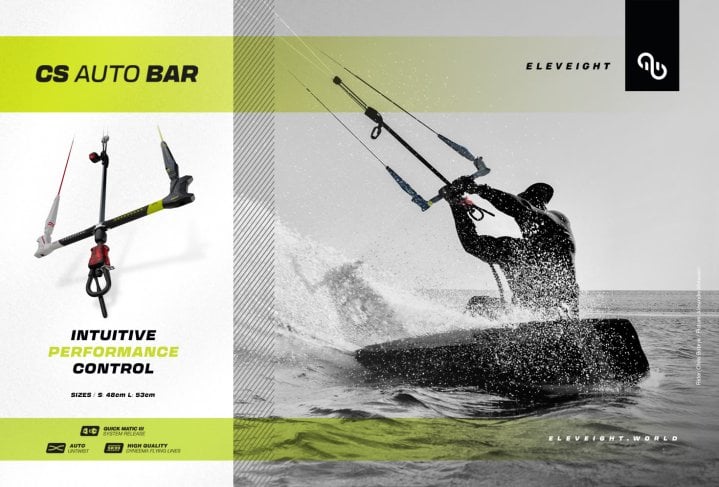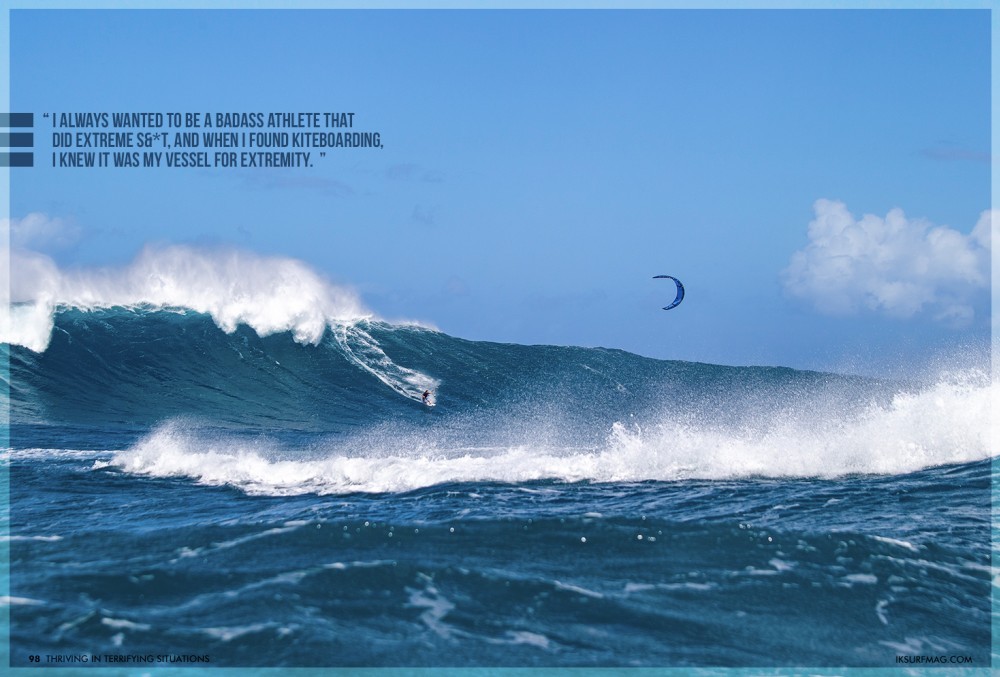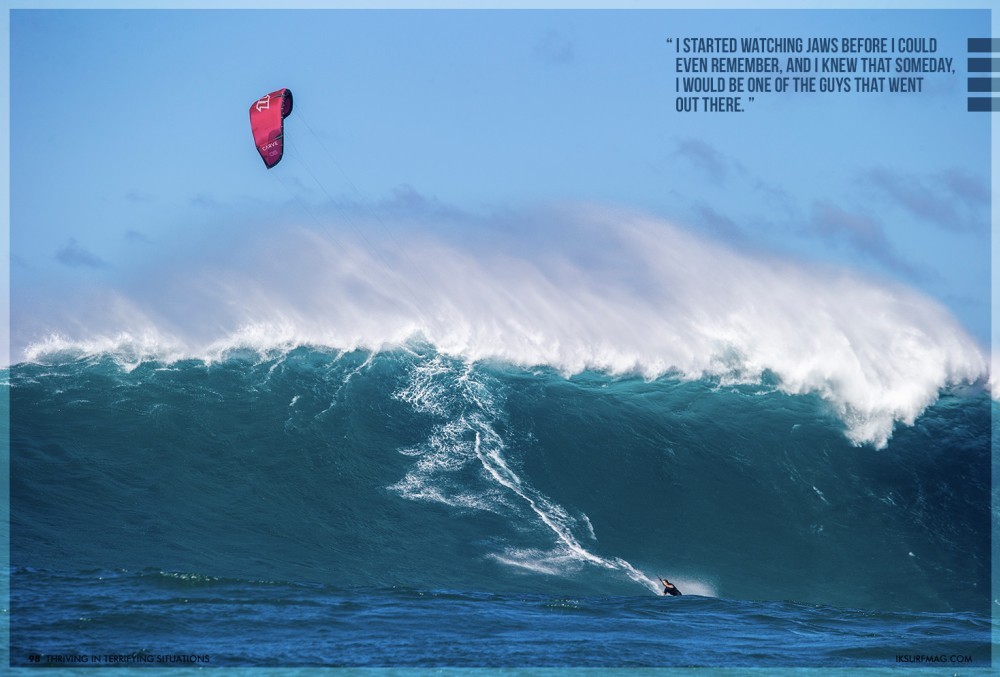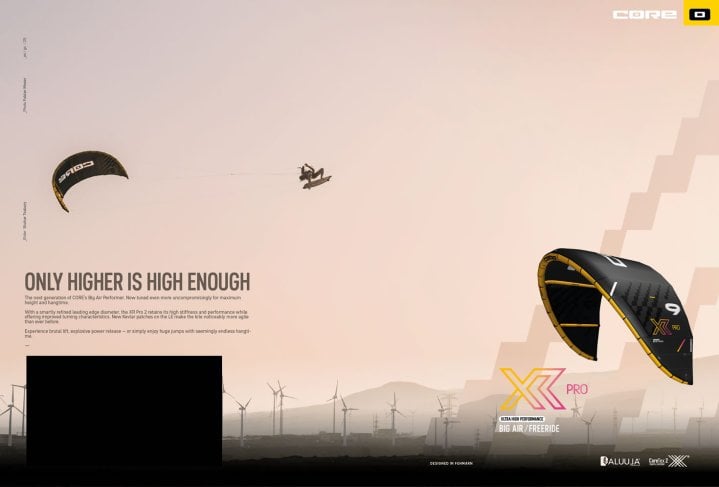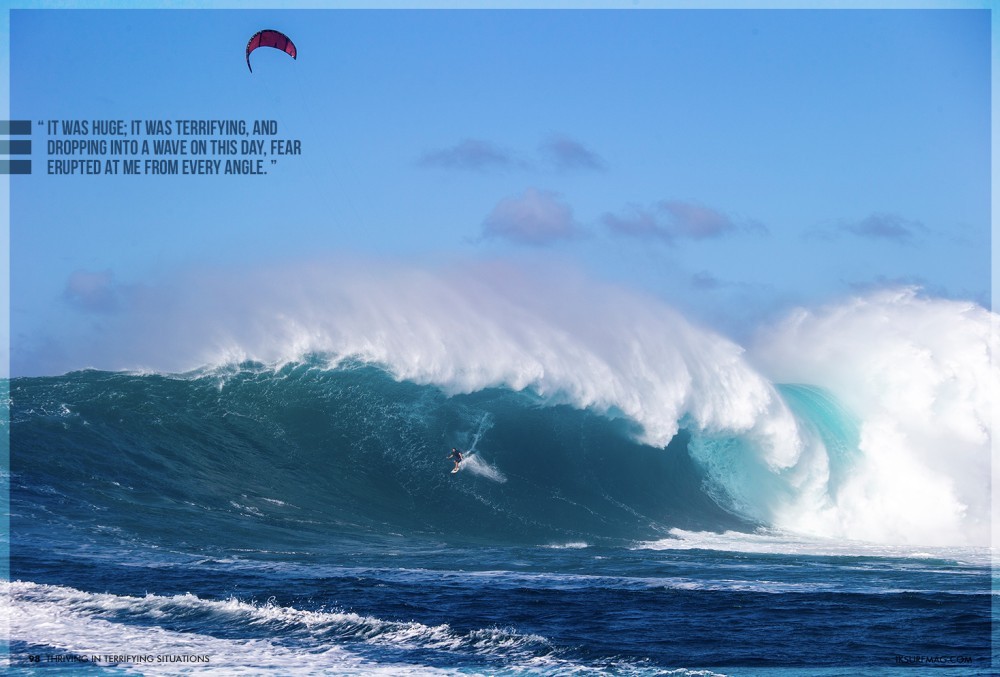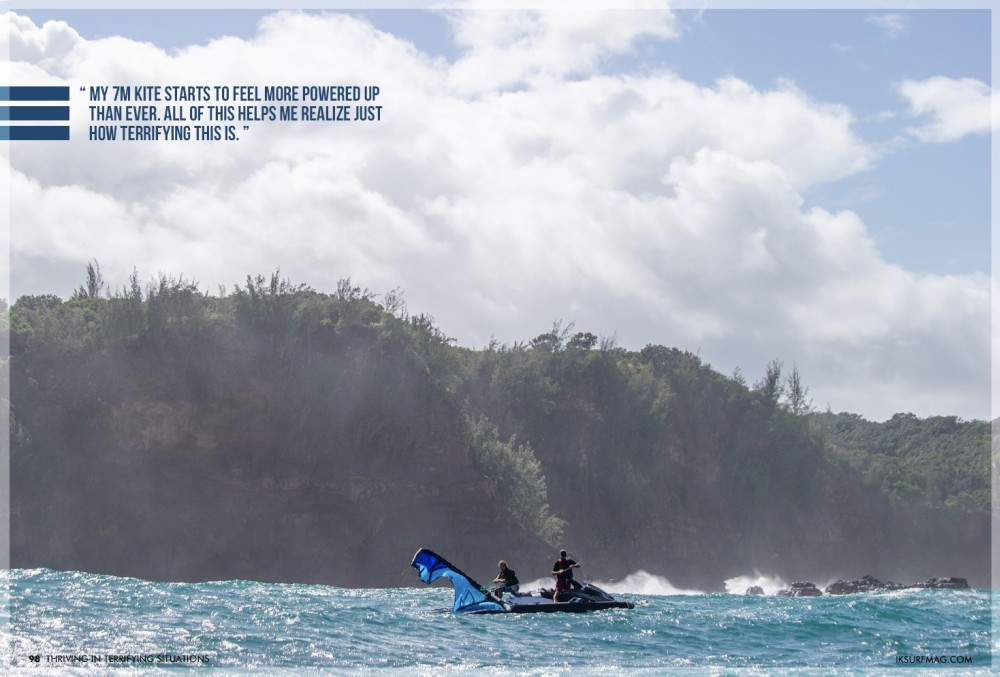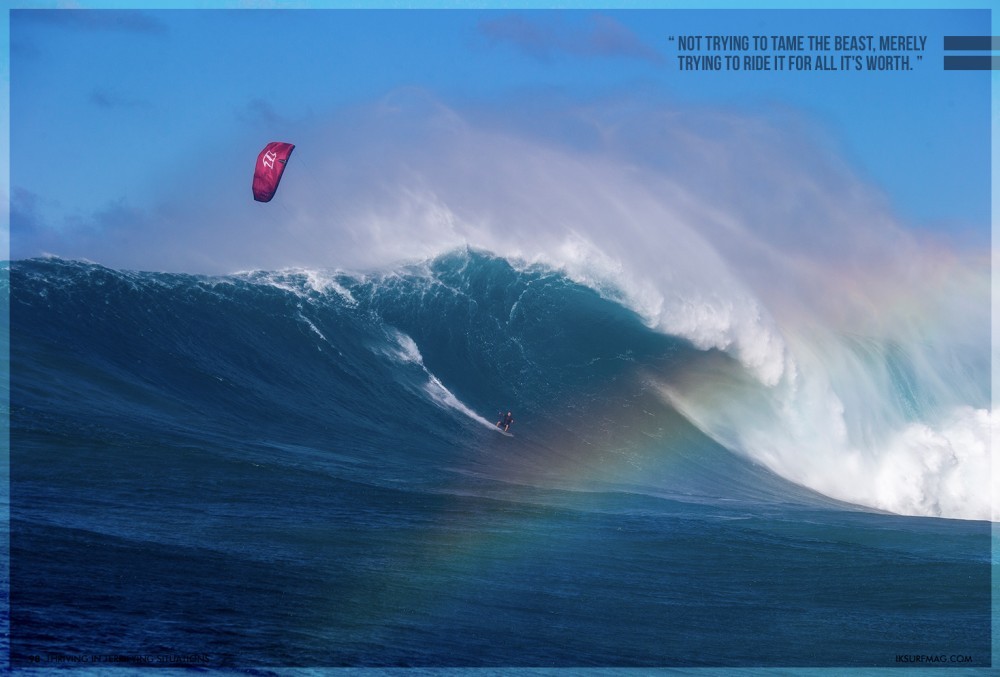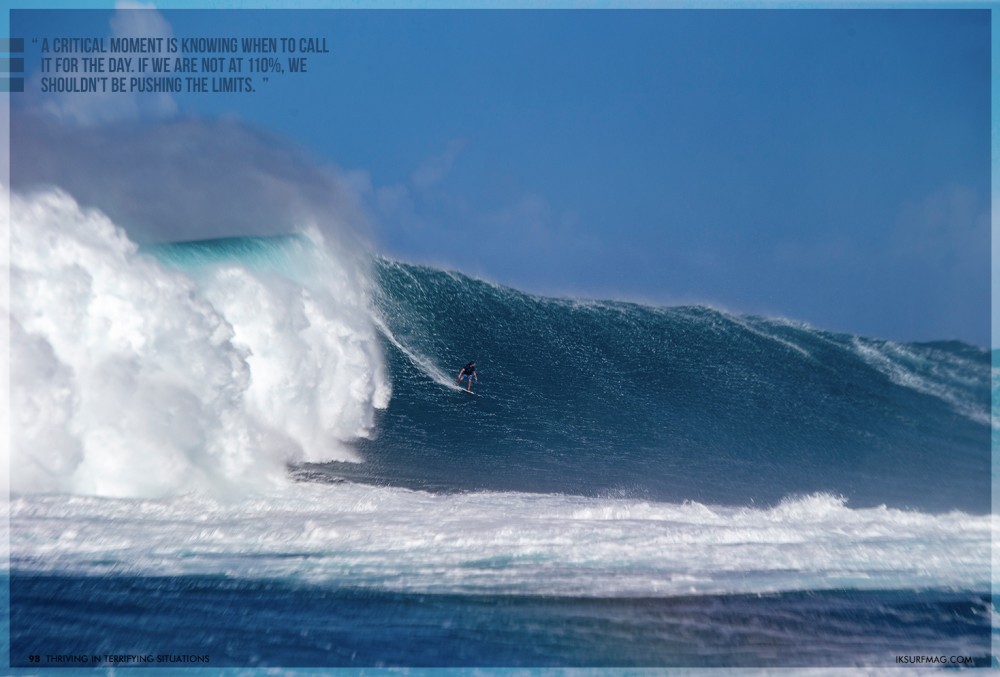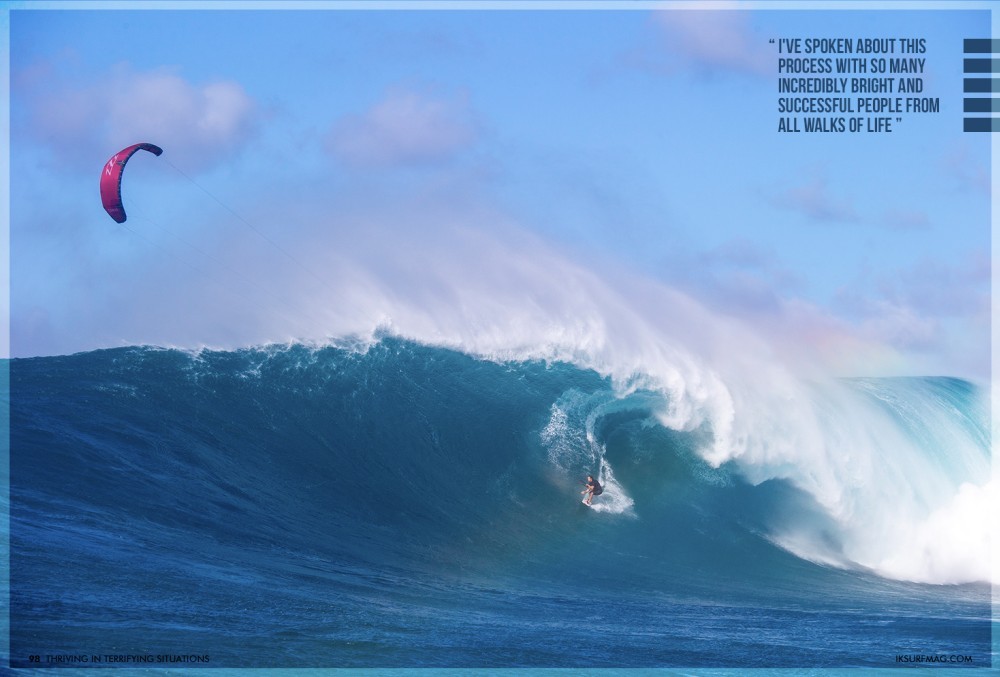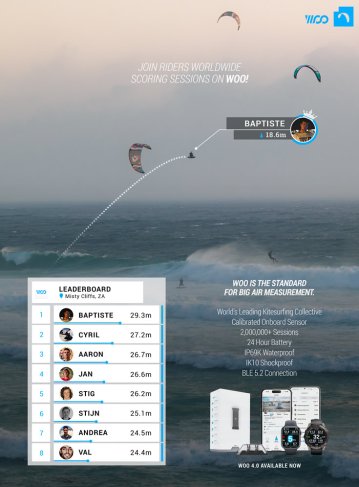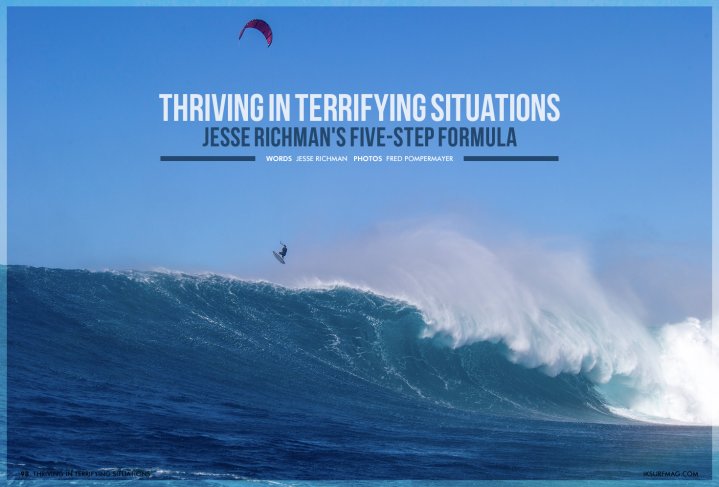
Thriving in Terrifying Situations
Issue 98 / Tue 11th Apr, 2023
If you look up "extreme" in the kitesurfing dictionary, you'll see Jesse Richman's portrait looking back at you! Having achieved the highest accolades in big air, performed some of the most mental stunts, and conquered terrifyingly huge waves, Jesse is the guru of keeping his s&*t together. Read his guide to not just staying alive but thriving in the face of terror in this exclusive article!
When I have a hard time making a decision, I like to think, "What excites me the most?" Answering that question can be super challenging, but I can usually tell which ideas sound more exciting than the rest, ultimately illuminating the most fun path forward.
I have no idea if it was nature or nurture, but for whatever reason, my instincts have always been adventurous. I always wanted to be a badass athlete that did extreme s&*t, and when I found kiteboarding, I knew it was my vessel for extremity. For a long time, I did radical things without hesitation and went full send, never thinking twice. But, it started to catch up with me as I found myself in hospital beds more and more. Bumps and bruises turned into breaks and tears. I realized that injuries weren't cool; in fact, they sucked! Yes, valuable lessons came with each injury, but they were highly unnecessary and a massive waste of time. The goal was to ride on the edge but not go too far - to find that thin line between death and glory, and stay there.
I realized that to stay healthy, I needed a process, a manual of sorts, to take on extreme tasks. I had to look at risk through a magnifying glass and learn to live life like a warrior, where every move and every second counts.
In my quest to become a warrior, I crafted a mindset and created formulas. Today, I want to share my universal recipe for success, which works particularly well when applied to fear-filled endeavors. The example application for this formula is kitesurfing Pe'ahi, AKA Jaws.
The 5 step process is as follows:
- Prepare
- Embrace Fear
- Find Flow
- Adapt
- Recover & Re-Engage
Let's break it down.
Step 1: Prepare
Preparation is the key, and it helps to be prepared on many scales (long and short term).
My Jaws preparation began before I was even born. When my parents moved to Hawaii and started a family, they allowed me not only to exist but to grow up in a waterman's wonderland surrounded by big-wave surfing. I started watching Jaws before I could even remember, and I knew that someday, I would be one of the guys that went out there. As a teenager, I decided to turn this dream into reality. I felt like I was pretty good at kitesurfing in big waves, but I also knew I wouldn't know what to do if I fell on a 50-foot wave. So, I looked at what other big wave surfers did and copied that. I learned how to freedive; I took multiple freediving courses and started spending as much time as possible holding my breath. There's a scientific side to breath holds and a spiritual/psychedelic side; understanding both sides is critical because you never know where your mind will go when being held under by a huge wave.
I started going out to Jaws before inflation vests were invented, but I still saw a ton of gear I needed to be safe out there, such as big impact vests, jet skis, rescue drivers, and specialized big wave boards. I learned about it all and did everything possible to acquire the necessary tools.
In addition to my mindset, strong body, and tools, I needed to have a deep understanding of the elements and the timing that I would have to nail, as well as the practical skills/movements I would need to master to rip it up out there.
Long story short, I spent years preparing for Jaws and haven't stopped. The analyzing/preparing phase runs until the very moment I find myself on a wave out there. Fast forward to the day pictured here in this magazine, the Eddie Swell 2023, on January 22nd. It was huge; it was terrifying, and dropping into a wave on this day, fear erupted at me from every angle.
Step 2: Embrace Fear
Fear has been ever-present throughout my journey. From day one, thoughts and ideas of what could go wrong made me question the quest, but my desire to ride Jaws and to be the man out there was always enough drive for me to push through my fears.
It's a different story when the stakes rise and I'm out on a wave. When I see the swell go from a 20' slope to a 50' beastly wall of water, the wind blasting up the face of the wave accelerates and picks up water particles which turn into a mist cloud that make my vision start to go blurry. I feel the wind surge, and my kite yanks me. My 7m kite starts to feel more powered up than ever. All of this helps me realize just how terrifying this is. This wave has the power of 1,000,000 horses; it's millions of pounds of water stacked up, ready to explode, and could vaporize anything or anyone in its way.
My mind has so many warning signals flashing and beeping as every survival instinct screams at me to get out of there; this is when the "paralyzing fear" hits people, where the risk is too grand to conceive and then can't move. Fortunately, I did step 1. I did my prep which is a prerequisite for step 2. Since I did my prep, instead of being paralyzed by fear, I can harness it and use it as fuel. I trust in my training and myself and embrace the fear; I grab that feeling and drink it up like a finely aged glass of scotch.
Step 3: Find Flow
By embracing my fear, I enter the next phase and find my flow. Since I have welcomed fear in, there is a rush, an overwhelming sensation of superhuman-like focus that comes over me. I enter into a flow state, the most incredible place to be and the most exciting mindset I've ever known. It's a place where I let go of thought, and I feel, I move, and everything flows; there's no time to think, just time to ride this wave.
Note - sometimes people skip step 1 and can find step 2, but it's implausible that someone who has missed step 1 will find step 3.
Step 4: Adapt
It doesn't matter how good the plan is, there's a good chance it's going out the window as things change quickly and frequently. As one is going Mach10 down a wave at Jaws, there are bumps and pieces of chop that might only be a few feet tall, but going 40+ mph, they are little ramps that can send you straight into a horrific backflip to cartwheel combo. Gusts of wind could boost you 100+ feet in the air. So, at this moment, it's all about being adaptable. Move with the wave, and see what it provides, maybe see a good place to do a big turn, or perhaps if you're super deep, you will find the barrel section. No matter what, there is no exploring this place in control, simply trying to make sense in chaos, not trying to tame the beast, merely trying to ride it for all it's worth.
Now, win or lose, stick it or eat it; that doesn't matter. No matter what happens on the wave, or our plan, the approach stays the same. If it was the best wave ever, move on to step 5; if we hit a bump and take a wrong turn, buckle up and get ready to put all that training to use. And, I must say this is truly an exciting part; getting to utilize years and years of training to survive a hold day can be the best part. I can only have this fun/exciting viewpoint if I crushed it on step 1.
There are tons of techniques that are crucial for surviving this moment, to name a few briefly:
In huge surf, never wear a kite leash, and always ditch your kite immediately when crashing. Getting tangled in your lines is game over.
Don't wear a board leash either; the last thing you want is to get smacked by a 14lb tow board.
Have the right flotation; I use a padded wetsuit for impact and flotation, as well as an inflation vest. This combo is the gold standard in big wave surfing today.
Have a safety team! I can't stress the importance of this enough. Without a jet ski, at Jaws or many of the world's big waves, one is just screwed if they crash; with a ski and a well-trained driver, a crash on a big wave can be fun.
Now, no matter what happens on the wave, eventually, we make it out to the channel again, maybe with our kite in the air or maybe on the back of a ski. Either way, we take a second and move on to the 5th and final step.
Step 5: Recover & Re-Engage
After all big wipeouts, the world feels funny and sometimes foggy; this fog can dissipate in a few minutes but sometimes lasts for days. A critical moment is knowing when to call it for the day. If we are not at 110%, we shouldn't be pushing the limits. If, however, we recover quickly, then, hell yes, let's re-engage.
A fun part about releasing the kite at Jaws during a wipeout is that you can go and get it back! The kite flies into the channel, so after the crash, you get worked, and the jet ski will come in like a knight in shining armor, pick you up, drive in so you can grab the board before it hits the rocks, and then go out to sea where the kite will be sitting there, waiting for more. It might require a bit of bar magic to untangle the lines, but because of step 1, this is easy. After the kite is back in the air, head out to the lineup for more. On the way back out, reset to step 1.
The best part of this 5 step process is that you can take it anywhere. It applies to The King of the Air, jumping over a huge rock pile, negotiating with sponsors, communicating with friends, family, foes, you name it. This methodology should work. I've spoken about this process with so many incredibly bright and successful people from all walks of life, who all find that we share a very similar process for success.
Thanks for reading, and best of luck with your preparations!
Videos
By Jesse Richman



